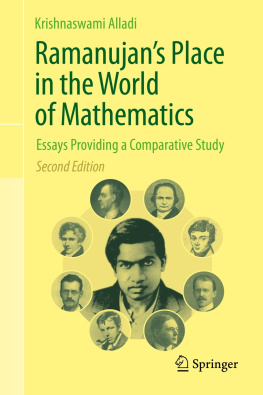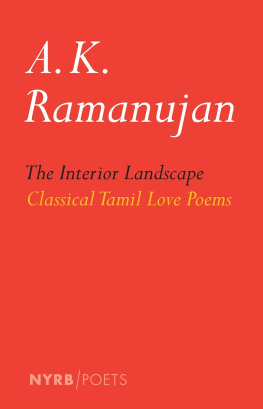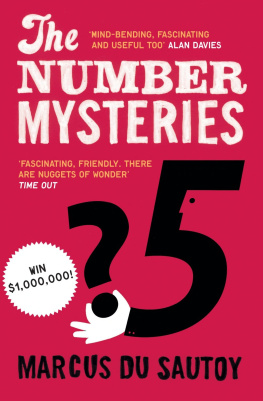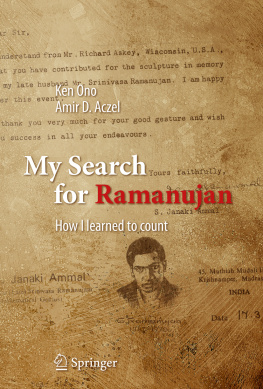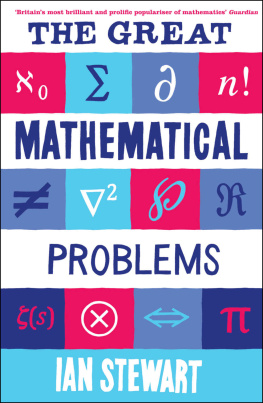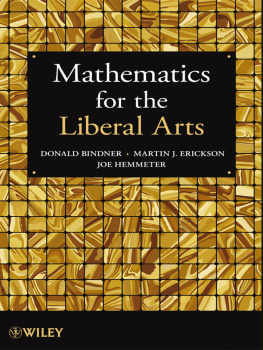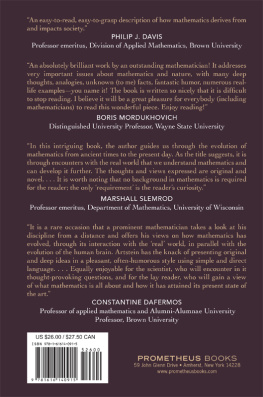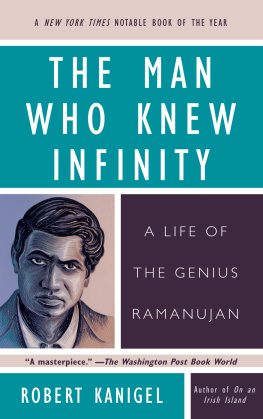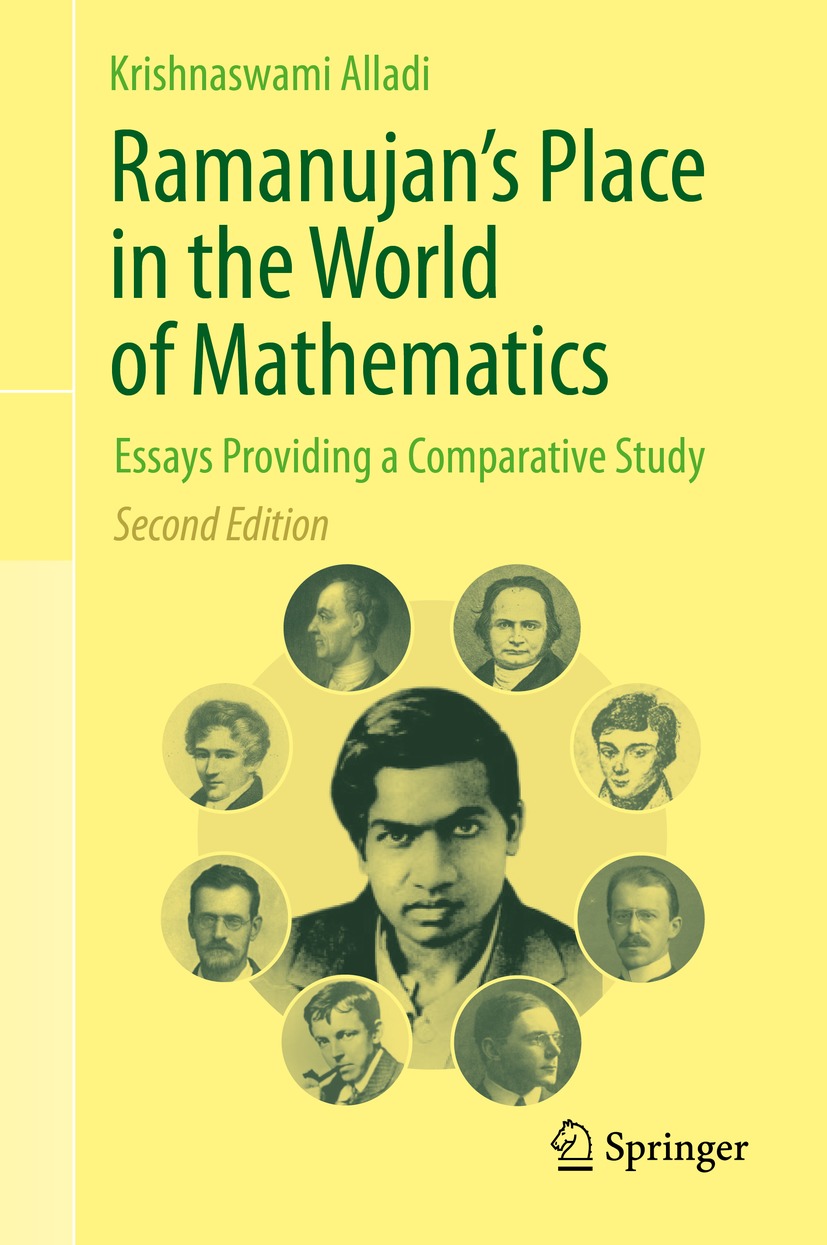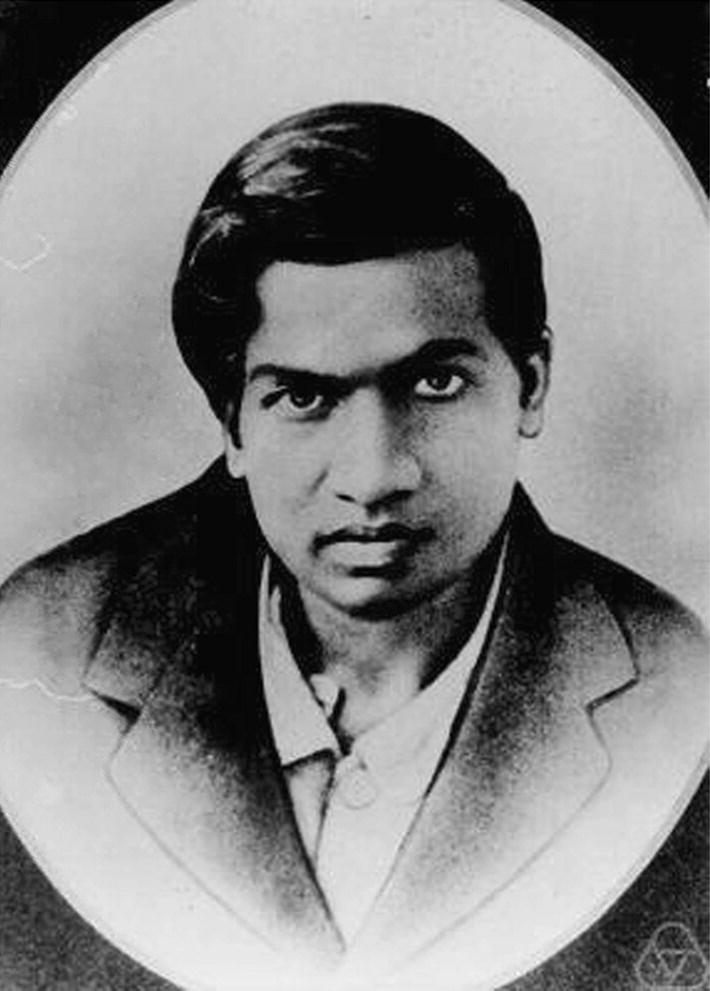Krishnaswami Alladi
Department of Mathematics, University of Florida, Gainesville, FL, USA
ISBN 978-981-15-6240-2 e-ISBN 978-981-15-6241-9
https://doi.org/10.1007/978-981-15-6241-9
Mathematics Subject Classication (2010): 01A32 01A45 01A50 01A55 01A60 01A65 01A70 05AXX 11-03 11AXX 11A41 11A25 11A55 11E25 11D41 11F03 11FXX 11GXX 11J68 11J81 11J82 11KXX 11NXX 11PXX 11S20 20-03 33-03 33CXX 33DXX 33EXX
Springer Nature Singapore Pte Ltd. 2013, 2021
This work is subject to copyright. All rights are solely and exclusively licensed by the Publisher, whether the whole or part of the material is concerned, specifically the rights of translation, reprinting, reuse of illustrations, recitation, broadcasting, reproduction on microfilms or in any other physical way, and transmission or information storage and retrieval, electronic adaptation, computer software, or by similar or dissimilar methodology now known or hereafter developed.
The use of general descriptive names, registered names, trademarks, service marks, etc. in this publication does not imply, even in the absence of a specific statement, that such names are exempt from the relevant protective laws and regulations and therefore free for general use.
The publisher, the authors and the editors are safe to assume that the advice and information in this book are believed to be true and accurate at the date of publication. Neither the publisher nor the authors or the editors give a warranty, expressed or implied, with respect to the material contained herein or for any errors or omissions that may have been made. The publisher remains neutral with regard to jurisdictional claims in published maps and institutional affiliations.
Cover illustration: The eight great mathematicians encircling Ramanujan were chosen because of the special significance of their link with Ramanujan. The two at the bottom are Hardy (on the left) and Littlewood (on the right) of Cambridge University; they were the two who analyzed Ramanujans letters, and came to the conclusion that he was a genius of first magnitude. Immediately above them are Rogers (on the left) and Schur (on the right) who had independently proved what are now called the Rogers- Ramanujan identities and went beyond these identities in their own ways. Above Rogers and Schur are Abel (on the left) and Galois (on the right), geniuses like Ramanujan who died very young, but had made path-breaking contributions in their youth. At the top are Euler and Jacobi, two of the greatest mathematicians in history, with whom Ramanujan was compared for sheer manipulative ability.
This Springer imprint is published by the registered company Springer Nature Singapore Pte Ltd.
The registered company address is: 152 Beach Road, #21-01/04 Gateway East, Singapore 189721, Singapore
Foreword
This is an eminently readable, unique book. There are many books about Ramanujan: numerous biographies, studies of his mathematics and its influence, even a psychoanalytic study. This, however, is the first to provide what might be termed as a perspective overviewEdition 1 (2012) and Edition 2 (2021).
Edition 1: This book is a collection of essays written by Krishna Alladi over more than two decades. Most of the essays originally appeared in The Hindu, one of Indias leading newspapers. Each was written with the intent of providing a new way of thinking about Ramanujan.
Several of the articles are book reviews. Each of the books in question illuminates one aspect of Ramanujan, from his personal biography to his Lost Notebook. Included among the reviews is one devoted to the stage play, Partition. Each review gives a fair and often enthusiastic evaluation of the work in question. Alladi does note inaccuracies when they occur. For example, Partition suggests that Ramanujan was obsessed with Fermats Last Theorem. As Alladi points out, this is far from the truth.
The aforementioned correction leads to another group of articles in the book which contrast Ramanujan with some other important mathematicians (including Fermat). These articles are really the heart of the book and are especially illuminating. They run from Galois (who died young like Ramanujan) to C. Jacobi (the pioneer of elliptic functions, a favorite topic of Ramanujan) to the little known L.J. Rogers (a Ramanujan contemporary of very similar talents). Alladi, who has worked in several areas of number theory and analysis, and who, as the editor of the Ramanujan Journal, is uniquely qualified to write these historical sketches which provide an unusual and compelling view of Ramanujan.
The remaining essays provide additional ways of looking at Ramanujan and his influence. These range from discussions of the prestigious SASTRA Ramanujan Prize to specific accounts of how current research has been based on foundations laid by Ramanujan.
This is a great book to dip into. While the theme is clear and coherent, each article can be read separately. Each is designed for a wide readership and can be read with enjoyment and understanding by nonmathematicians. Each article will give you a new look at Ramanujan. More generally, you will come away with an enhanced appreciation of human greatness as expressed in the life and work of this Indian genius.
Edition 2: The richness and value of this book is even greater in this new edition with the inclusion of six new chapters. The overall theme of these new chapters is Alladis connection to the work and world of Ramanujan.
I especially want to point to the chapter where the author reviews the film The Man Who Knew Infinity. This is undoubtedly the most thoughtful and thorough review of this movie ever written. Alladi is uniquely positioned to evaluate it both from an Indian and an international perspective. You will enjoy the movie much more if you read this chapter first.
Two new chapters chronicle recent Ramanujan celebrations. One is devoted to the Royal Societys conference on the centenary of Ramanujans election as FRS, and the other is about the 125th anniversary of Ramanujans birth. The latter piece is wonderfully informative about recent developments stemming from Ramanujans work.
In the 1920s and 1930s, G. N. Watson was the chief expositor and developer of Ramanujans ideas. His work paved the way for further research. In a new chapter, Alladi provides a full account of Watson and his contributions. Especially noteworthy is the role that Watson played in the preservation of Ramanujans lost notebook.
Perhaps the most surprising chapter is devoted to Ramanujan and Mauritius, the tiny island nation in the southern Indian Ocean. What could possibly be the connection between the two? The answer is that there is a Ramanujan Trust in Mauritius which conducts an annual Ramanujan Mathematics Talent Exam for high school and college students, and an annual set of lectures on Ramanujan-related mathematics at the University of Mauritius by international experts. In 2017, Alladi was the invited expert, and he describes cogently the island and the activities of its Ramanujan Trust.

